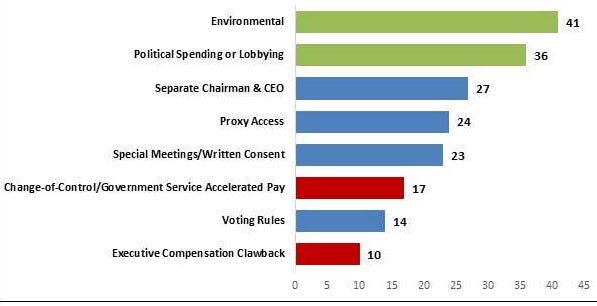
As Donald Trump is about to walk into the Oval Office, questions loom over the future of the U.S. federal climate change policy. He denied the existence of man-made climate change, and argued—quite innovatively, I must admit—that the concept of climate change was plotted by the Chinese. His appointment of Scott Pruitt, a long-standing pro-fossil energy advocate and a denier of human-induced climate change, to the administrator post of the Environmental Protection Agency (EPA) is quite consistent with his previous views. Although little is known about what the forthcoming administration will or will not do, it’s clear that the U.S. federal government under Trump won’t do much to fight climate change.
But it never actually did. Over the last two decades, the U.S. Congress has been a graveyard of the bills that touch upon climate change mitigation: The McCain-Lieberman Climate Stewardship Act, The Global Warming Pollution Reduction Act, The Climate Protection Act of 2007, The Sustainable Energy Act, and The American Clean Energy and Security Act of 2009 all died without any exceptions. Seeing no hope in new bills, the Obama administration turned to an existing one, the Clean Air Act (CAA), under which the EPA could launch the Clean Power Plan (CPP) that aims to limit greenhouse gas emissions from utility sectors. Earlier this year, however, the Supreme Court stayed the enactment of the Clean Power Plan until the lower court clears an appeal case. Having no regulatory power in its hands means that the U.S. federal government is essentially handcuffed when it comes to climate mitigation.
To be fair, the Obama administration did show tremendous support and leadership in the process that gave birth to the Paris Climate Agreement of 2015. The Obama administration also closed a historical bilateral climate agreement with China. The current administration certainly deserves due credit for such achievements. But signing climate agreements alone won’t stop climate change; it needs real and urgent action to significantly reduce greenhouse gas emissions.
If not the federal government, who can step up to this tall order? Fortunately, state and local governments of the U.S. are still holding strong. In September of this year, California Governor Jerry Brown signed a landmark legislation, SB32, that requires the state to reduce greenhouse gas emissions by 40% relative to 1990 level by 2030. Hawaii and Minnesota also set state-wide mitigation targets, and a similar proposal is on the table in the state of Washington. Many cities and municipalities have also pledged to reduce greenhouse gas emissions. In June, 2016 the Global Covenant of Mayors for Climate & Energy, which was joined by 609 cities that represent half a billion inhabitants, committed to reduce nearly 1 billion metric tons of greenhouse gas emissions in CO2 equivalency.
Rescuer with a deep pocket
What is the most remarkable to me, however, is the emergence of the investment community in the picture of climate change mitigation. This unlikely rescuer of the planet is painting the corporate-climate change relationship very differently.
But first, why do investors even care? Well, many investors see climate change as a risk factor—actual or perceived. Think about coastal real estate in Florida, for example. Coastal cities in Florida have been experiencing an average of about 4 flood events a year. But the frequency of flooding can ramp up to 240 times a year under climate change, according to climate models. Coastal real estate markets in those regions are already slowing down, and it can be further exacerbated as climate change continues. What is particularly frightening to investors is the fact that, unlike other boom-and-bust cycles that they are familiar with, the degradation of asset value driven by climate change does not have a prospect of rebound. It is not only coastal real estate that is at risk. See it this way: Citigroup reported that the loss of Gross Domestic Product (GDP) due to climate change can be as much as $44 trillion by mid-century. Some businesses will have to absorb the losses, and so will the investors who put their money to such businesses and assets.
In the investment world, perceived risks are as important as, if not more important than, actual risks. Few scientific research papers would have been more chilling to the asset holders of fossil energy resources than the 2015 Nature paper, which showed that 80% of known coal, 30% of oil and 50% of natural gas reserves need to stay in the ground if the global community is serious about limiting the global mean temperature rise within 2 degree Celsius, which is widely seen as a requirement to avoid the most dangerous consequences of climate change. It is unclear when, if ever, this will happen. But if so, fossil energy assets become ‘stranded’, and dramatic devaluation is inevitable. This paper came out when the UN-led global climate change negotiation was underway, the EPA was working on the Clean Power Plan, and when coal was struggling to compete with cheap natural gas from fracking. Amidst these series of events, Peabody Energy, the nation’s largest coal producer, filed for a chapter 11 bankruptcy protection.
But it’s not only these investment firms and asset managers who should be worried. What may go under water or stay under the ground are not just coastal properties or fossil energy resources, but also your own money, be it your retirement funds or mutual fund. That’s why earlier this year the Church of England, which holds significant shares of ExxonMobil (who would have guessed!), pressed the company for more information disclosure on the risks of climate change. Around the same time, Financial Stability Board Chairman Mark Carney also called for additional scrutiny of firms’ climate change risks. But this is not a new trend. For more than a decade, CDP, a UK-based non-profit backed by institutional investors that handle over $100 trillion in combined assets, has been requesting large corporations and its suppliers to report how they are coping with the risks of climate change.
What impact can investment community really make?
While it seems clear why investors (and you) should be concerned about the potential risks of climate change to better protect the asset value, what does that really do in terms of an actual reduction of greenhouse gas emissions? This is the point where opinions often differ.
Traditional Socially Responsible Investment (SRI) strategies focused on withdrawing funds from ‘bad’ sectors and reinvesting the funds to ‘good’ ones. Would such a strategy achieve any tangible greenhouse gas emissions reduction? Suppose that a climate risk-conscious or simply environmentally responsible investor divests from a fossil energy sector. But as long as the sector that they divest from generates healthy profits, there are plenty of other investors that will gladly take the slot, resulting in no meaningful difference in actual greenhouse gas emissions. It is certainly true that divestment from fossil energy industry and carbon intensive sectors sends a symbolic signal to the market. Though important, however, there is not enough evidence that such actions reduce greenhouse gas emissions.
New breed of investors
That’s why some of the socially responsible investors are exploring new strategies including (1) bilateral agreement, (2) targeted investment within sector, and (3) active engagement.
See what Mr. Thomas DiNapoli can do. The comptroller of the New York State landed bilateral agreements with multiple corporations requiring them to report the steps toward reducing 80% of their greenhouse gas emissions by 2050. Although he does not have any of the regulatory sticks that state agencies do, DiNapoli has a big carrot: the Common Retirement Fund of the New York State, which many companies could see a good use for.
Furthermore, he convinced Goldman Sachs to create a new investment fund that targets low greenhouse gas emitters within each sector, to which he tossed $2 billion. Investing in ‘good’ players within each sector rather than divesting from ‘bad’ sectors altogether is a very different and potentially a highly rewarding strategy. While sectoral portfolio management hardly produces any net change in the presence of other environmentally nonchalant investors around, targeted investment within each sector can transform the environmental profile of the sector itself.
The most interesting SRI strategy of all to me is what I call the Trojan approach. Some of the new SRI firms are not necessarily drawing their funds from greenhouse gas intensive businesses; in fact, they actively invest in such businesses, instead. Why? You can’t catch the tiger’s cub unless you are to step into its cave, as an old maxim says. Hermes EOS, a prominent Environmental, Social, and Governance (ESG) investing firm, for example, has been actively investing in extractive companies such as Shell and Rio Tinto, which were the primary divestment targets of traditional SRI portfolio managers. The firm then participated in the decision-making process of those companies to change them from within. Hermes EOS is not alone in this game. The Principles of Responsible Investing (PRI), a coalition of about 1,500 institutional investors including major banks and fund management firms that manages over $60 trillion in asset, operates an ‘Engagement Team’ that facilitates company-investor engagements on social and environmental issues.
Challenges
But there are challenges. In particular, creating scale is a big deal. Over the last decade, the volume of funds managed by responsible investing community grew enormously. However, these investors are still a minority among investors, and their voices are only as loud as their shares. That’s why these investors are actively seeking proxy voting opportunities. Leveraging upon proxy voting they often win larger representation in vote than what their real share represents. According to the 158 companies that filed proxy documents in 2015, 41 shareholders’ proposals were on environmental issues, which ranks itself as the number 1 most frequently appeared subtopic.

Figure 1. Number of Shareholder Proposals by topic in 2015 (among Fortune 250 companies)
Another challenge is ensuring financial performance. In the midst of the European financial crisis in the early 2010s, the renewable energy sector didn’t perform well, and neither did the investment programs targeting those renewable energy sectors. While ESG investors may operate under the vision of protecting common goods, they too have the fiduciary duties to protect the asset holdings. Unless ESG investment strategies brings back not only an improved environment and society but also financial returns, ESG investing won’t be able to sustain itself.
The good news is that active engagement achieves not only ESG objectives but also higher return. Studies found 4-7% better financial performance in the cases where investors actively engage in firm’s decision.
Closing
Under the forthcoming Trump administration, the role of non-federal actors will be more important than ever in the face of climate change. Among others, investment communities are one of my highest hopes. In particular, new SRI strategies such as bilateral agreement, targeted investment within sectors, and active engagement are emerging new strategies that can change the way how we fight climate change. So, go ESG investors, and save our planet as well as our retirement funds!
